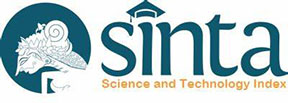In-vitro Evaluation of Fungicide Sensitivity of Tomato Leaf Blight Pathogens
DOI:
https://doi.org/10.32734/jopt.v8i1.5842Keywords:
In-vitro, fungicides sensitivity, Alternaria solani, Phytophthora infestansAbstract
Tomato early and late blight diseases caused by Alternaria solani and Phytophthora infestans respectively, are constraints to tomato production globally. Conventional use of commercial synthetic fungicides in management of tomato blight disease has become a key input for tomato production among farmers in Tharaka Nithi County, Kenya. Indiscriminate use and application of sub-lethal doses of fungicides negate disease management efforts, and may lead to gradual fungicide resistance.  Yet, local tomato farmers have continued to use the fungicides without periodic evaluation of their effectiveness. This study was carried out in-vitro to evaluate the efficacy of six synthetic commercial fungicides used by farmers around River Ruguti, against two tomato leaf blight pathogens; Alternaria solani and Phytophthora infestans. The poison food method was used to evaluate fungicides known by trade names and application levels;  Mancozeb (640 g kg-1) + Metalaxyl (40 g kg-1), Mancozeb 640 g/kg + Metalaxyl 80 g/kg, Mancozeb, Propineb700 g/kg + Cymoxanil 60 g/kg, Carbendazim and Triticonazole at different concentration (25%, 50% and 75%). The in-vitro plate experiment was laid out in a Complete Randomized Design with 3 replicates, and data on mycelia growth inhibition analyzed through General Linear Model (α=.05) and significant means separated using Least significant difference (LSD) using Scientific Analysis System version 9.4. All the tested fungicides significantly (p≤ 0.05) inhibited mycelial growth of tested pathogen.  Percentage inhibition for early blight pathogen (Alternaria solani) was 80.42% compared to late blight pathogen Phytophthora infestans at 69.51%. Mancozeb  (640 g kg-1) + Metalaxyl (40 g kg-1) and Propineb700 g/kg + Cymoxanil 60 g/kg recorded higher per cent inhibition of mycelia growth of 92.4% and 89.71% respectively. Carbendazim recorded lower per cent inhibition of 39.15%. Mycelia growth inhibition increased with an increase in fungicide concentration. Lower inhibition of 71.78% was observed at 25% concentration as compared to 50% and 75% with 76.77% and 76.36% respectively. Fungicides screened varied in mycelia inhibition against P. infestans and A. solani isolates with Mancozeb  (640 g kg-1) + Metalaxyl (40 g kg-1) and Propineb700g/kg +Cymoxanil 60g/kg giving significantly (p≤ 0.05) better inhibition while Carbendazim had the lowest inhibition effect. Increased fungicide concentration effectively inhibited mycelia growth. Thus higher concentration of fungicide application is recommended in cases where there is low efficacy of fungicides.
Downloads
References
Abada, K., Mostafa, S. and Hillal, M. R. (2008). Effect of some chemical salts on suppressing the infection by early blight disease of tomato. Egypt. Journal of Applied Sciences, 23, 47-58.
Akram, S., ud Din Umar, U., Atiq, R., Tariq, A., Mahmood, M. A. and Ateeq-ur-Rehman. (2018). Emerging Resistance in Alternaria solani Against Different Fungicides in Southern Punjab, Pakistan. Pakistan Journal of Life and Social Sciences, 16(2), 117-123.
Agrios, G. (2005). Plant Pathology (5Th ed.). Burlington, MA 01803, USA.: Elsevier Academic Press 30 Corporate Drives, Suite 400.
Bartlett, D., Clough, J., Godwin, J., Hall, A., Hamer, M. and Parr-Dobrzanski, B. (2002). The strobilurin fungicides. Pest Management Science, 58, 649-662.
Bell, A. and Wheeler, M. (1986). Biosynthesis and functions of fungal melanins. Annual Review of Phytopathology, 24, 411-451.
Biovision. (2019). Late blight. Retrieved 10 14, 2020, from infonet-biovision: https://www.infonet-biovision.org/PlantHealth/Pests/Late-blight.
Chaerani, R. and Voorrips, R. E. (2006). Tomato early blight (Alternaria solani): The pathogen, genetics, and. J Gen Plant Pathol, 72, 335–347.
Chasti, F., Bhat, N. A. and Rather, R. A. (2018). Severity of Tomato Late Blight Caused by Phytophthora infestans (Mont.) De Bary in Kashmir. International Journal of Current Microbiology and Applied Sciences, 7(10), 3036-3047.
Davidse, L. C. (1975). Mode of action of methyl benzimidazol-2-yl-carbamate (MBC) and some biochemical aspects of acquired resistance against this fungicide in Aspergillus nidulans. In System Fungizide. Akademie Verlag, Berlin.
Fernández-Ortuño, D., Torés, J. A., de Vicente, A. and Pérez-GarcÃa, A. (2010). Fungicides: The QoI Fungicides, the Rise and Fall of a Successful Class of Agricultural Fungicides. (O. Cariss, Ed.) Rijeka, Croatia: InTech.
Fungicide Resistance Commitee (FRAC), 2010. FRAC Code List: Fungicides sorted by mode of action. Retrieved from www.frac.info/frac/publication/anhang/FRAC_CODE_LIST
Ghazanfar, M. U., Raza, W., Ahmed, K. S., Qamar, J., Haider, N. and Rasheed, M. H. (2016). Evaluation of different fungicides against Alternaria solani (Ellis and Martin) Sorauer cause of early blight of tomato under laboratory conditions. International Journal of Zoology Studies, 1(5), 08-12.
Gomaa, A. (2001). Pathological studies on early blight of tomato. M.Sc. thesis, Faculty of Agriculture, Cairo University.
Gouot, J. M. (1994). “Characteristics and population dynamics of Botrytis cinerea and other pathogens resistant to dicarboximidesâ€. In Fungicide Resistant in North America. (C. J. Delp, Ed.) The American Phytopathological Society.
Griffith, G. W., Snell, R. and Shaw, D. S. (1995). Late blight (Phytophthora infestans) on tomato in the tropics. Mycologist, 9(2), 87-98.
Gullino,Maria Lodovica, Tinivella, Federico, Garibaldi, Angelo, Kemmitt , Gregory M., Bacci, Leonardo and Sheppard, Brian . (2010). Plant Disease, 94(9).
Gulzar, N., Kamili, A. N. and Mir, M. Y. (2018). The Process of Early Blight Disease Development in Tomato. Journal of Research and Development, 18, 112-115.
Hamel, C., Vujanovic, V. and Gan, Y. (2011). Fungicide: Modes of Action and Possible Impact on Nontarget Microorganisms. International Scholarly Research Network , 1-8.
Hassan, M., Farooq, M. S. and Gul, F. (2014). In Vitro Evaluation of Some Fungicides against Common Fungal Pathogen of Early Blight and Fruit Rot of Tomatoes.
Howard, R. J. and Aist, J. R. (1980). Cytoplasmic microtubules and fungal morphogenesis: Ultrastructural effects of methyl benzimidazole-2-ylcarbamate determined by freeze-substitution of hyphal tip cells. Journal of. Cell Biology, 87, 55-64.
Iqbal, T., Altaf, S., Ali, T. M., & Qayoom, S. (2020). In vitro evaluation of systemic and non systemic fungicides against Early blight (Alternaria solani Ellis and Martin) Jones and Grout of tomato under temperate conditions of Kashmir. Journal of Entomology and Zoology Studies, 8(2), 362-365.
Karima, H. H. and Sayeda, F. F. (2007). Effect of Metalaxyl and Chlorpyrifos-Methyl Against Early Blight (Alternaria solani, Sor.) and Whitefly (Bemisia tabaci, Genn.) In Tomato and Eggplant. Journal of Applied Sciences Research, 8(3), 723-732.
Keskse, D. (2019). Overview of Epidemiology and Management of Late Blight (Phytophtra infestans (Mont.) on Potato and Tomato Crops. International Journal of Research in Agricultural Sciences, 6(4), 79-88.
Kumar, P. and Singh, S. (2017). In Vitro Evaluation of Fungicides and Plant Extract against Alternaria solani (Ellis) Causing Early Blight in Tomato (Lycopersicon esculentum Mill.). International Journal of Current Microbiology and Applied Sciences , 6(9), 820-827.
Kumar, V., Singh, G. and Tyagi, A. (2017). Evaluation of Different Fungicides Against. International Journal of Current Microbiology and Applied Sciences, 6(5), 2343-2350.
Majeed, A., Muhammad, Z., Ullah, Z., Rafi, U. and Ahmad, H. (2017). Late Blight of Potato (Phytophthora infestans): Fungicides Application and Associated Challenges. Turkish Journal of Agriculture - Food Science and Technology, 3(5), 261-266.-Raouani, N. and Boughalleb-M’Hamdi, N. (2018). Effect of Six Fungicides against Fusarium oxysporum and F. solani Associated with Peach Seedlings Decline in Tunisian Nurseries. Annual Research and Review in Biology, 26(4), 1-11.
Masiello, M., Somma, S., Ghionna, V., Logrieco, A. F and Moretti, A. (2019). In Vitro and in Field Response of Different Fungicides against Aspergillus flavus and Fusarium Species Causing Ear Rot Disease of Maize. Toxins 2019, 11.
Mengesha, G. G. (2017). Integrated management of tomato late blight [Phytophthora infestans (Mont.) de Bary] through host plant resistance and reduced frequency of fungicide application in gamo gofa zone, Southern Ethiopia. Msc Thesis Haramaya University, Haramaya.
MoALF. (2017). Climate Risk Profile for Tharaka Nithi County. Kenya County Climate Risk Profile Series. Nairobi, Kenya: The Ministry of Agriculture, Livestock and Fisheries (MoALF).
Mphahlele, G. H. (2017). Characterisation and aggressiveness of tomato early blight fungus (Alternaria solani) in Limpopo Province. Thesis (M.Sc. (Agriculture Agronomy)) - University of Limpopo.
Mugao, L. G., Muturi, P. W., Gichimu, B. M. and Njoroge, E. K. (2020). In Vitro Control of Phytophthora infestans and Alternaria solani Using Crude Extracts and Essential Oils from Selected Plants. International Journal of Agronomy, 1-10.
Namanda, S., Olanya, O., Adipala, E., Hakiza, J., ElBedewy, R., Baghsari, A., et al. (2003). Fungicide application and host-resistance for potato late blight management: Benefits assessment from on-farm studies in SW Uganda. Crop Protection, 11(23), 1075-1083.
Nyankanga, R., Wien, H., Olanya, O. and Ojiambo, P. (2004). Farmers’ cultural practices and management of potato late blight in Kenya Highlands: implications for development of integrated disease management. International Journal of Pest Managment, 50, 135-144.
Patel, J. B. (2012). Early blight [Alternaria solani (Ellis and Martin) Jones and Grout] of tomato and its management. Thesis_ Junagath Agricultural University.
Patil, M., Ukey, S. and Raut, B. (2001). Evaluation of fungicides and botanicals for the management of early blight (Alternaria solani) of tomato. PKV Research Journal, 25(1), 4951.
Peerzada, S., Viswanath, H. and Bhat, K. (2020). In-vitro studies on the effect of fungicides against mycelial growth and sporangial germination of Phytophthora infestans (Mont) de Bary causing late blight of potato. International Journal of Chemical Studies, 8(1), 2069-2075.
Rekanović, E., PotoÄnik, I., MilijaÅ¡ević-MarÄić, S., Stepanović, M., Todorović, B. and Mihajlović, M. (2012). Toxicity of metalaxyl, azoxystrobin, dimethomorph, cymoxanil, zoxamide and mancozeb to Phytophthora infestans isolates from Serbia. Journal of Environmental Science and Health, 47(12), 403-409.
Roopa, R. S., Yadahalli, K. B., and Kavyashree, M. C. (2014). evaluation of natural plant extracts, antagonists and fungicides against early blight caused by A. solani in vitro. The bio scan, 9(3), 1309-1312.
Roy, C. K., Akter, N., Sarkar, M. K., Moyen, U. P., Zenat, E. A. and Jahan, M. A. (2019). Control of Early Blight of Tomato Caused by Alternaria Solani and Screening of Tomato Varieties against the Pathogen. The Open Microbiology Journal, 13, 41-50.
Russell, P. (2005). A century of fungicide evolution. Journal of Agricultural Science, 143, 11-25.
Saad, A., E.A. Kadous, E.H. Tayeb, M.A. Massoud, Soad, M. A. and El-Ela, A. A. (2014). The inhibitory effect of some antioxidants and fungicides on the growth of Alternaria solani and Fusarium solani in vitro. Middle East Journal of Agriculture Research, 3(2), 123-134.
Saima Farooq, Jat, R., Gupta, A., Singh, R., Majeed, M., Nabi, S. U., et al. (2019). Evaluation of different fungicides against Alternaria solani (Ellis & Martin) Sorauer cause of early blight of tomato under laboratory conditions. The Pharma Innovation Journal, 8(8), The Pharma Innovation Journal 2019; 8(8): 140-142.
Sarfraz, M., Khan, S., Moosa, A., Farzand, A., Ishaq, U., Naeem, I., et al. (2018). Intergrated management of Alternaria Blight of potato promising antifungal potential of selecting botanicles extracts, Fungicides and trichoderma isolates against alternaria solani. Cercetări Agronomice în Moldova, 1(173), 65-74.
Stević, M., Pavlović, B. and Tanović, B. (2017). Efficacy of fungicides with different modes of action in raspberry spur blight (Didymella applanata) control. Pestic. Phytomed. (Belgrade), 32(1), 25–32.
Tunçbilek, M., Kiper, T. and Altanlar, N. (2009). Synthesis and in vitro antimicrobial activity of some novel substituted benzimidazole derivatives having potent activity against MRSA. Eur. J. Med. Chem. , 44, 1024-1033.
Vanitha, S., Jayappa, J., Govardhana, M., Manjunath, L. and Chandrashekar, S. C. (2013). Determination of Medium Inhibitory Concentration of Carbendazim Against Fungus Alternaria solani Associated with Early Blight of Potato. Environment and Ecology, 270—272.
Vinay, P. P., JU Vinay, Kumar, H. and Shiva, K. K. (2020). Management of early blight of tomato (Alternaria solani) through new generation fungicides under field condition. International Journal of Chemical Studies , 8(1), 1193-1195.
Yadav, O. P. and Dabbas, M. R. (2012). Efficacy of fungicides in the management of early blight of tomato (Alternaria solani). International Journal of Plant Protection, 5(2), 413-416.
Yadav, V. K., Vijay Kumar and Mani, A. (2018). Evaluation of fungicides, biocontrol agents and plant extracts against early blight of potato caused by Alternaria solani. International Journal of Chemical Studies, 6(1), 1227-1230.
Yang, L.-N., He, M.-H., Ouyang, H.-B., Zhu, W., Pan, Z.-C., Sui, Q.-J., et al. (2019). Cross-resistance of the pathogenic fungus Alternaria alternata to fungicides with different modes of action. BMC Microbiol, 205.
Zhou, Y., Xu, J., Zhu, Y., Duan, Y. and Zhou, M. (2016). Mechanism of Action of the Benzimidazole Fungicide on Fusarium graminearum: Interfering with Polymerization of Monomeric Tubulin But Not Polymerized Microtubule. The American Phytopathology society, 106(8).
Zhu, G., Huang, F., Feng, L., Qin, B., Yang, Y., Chen, Y., et al. (2008). Sensitivities of Phytophthora infestans to metalaxyl, cymoxanil, and dimethomorph. Agr. Sci. China, 7(7), 831–840.
Downloads
Published
How to Cite
Issue
Section
License
Copyright (c) 2021 Jurnal Pertanian Tropik

This work is licensed under a Creative Commons Attribution-ShareAlike 4.0 International License.






















